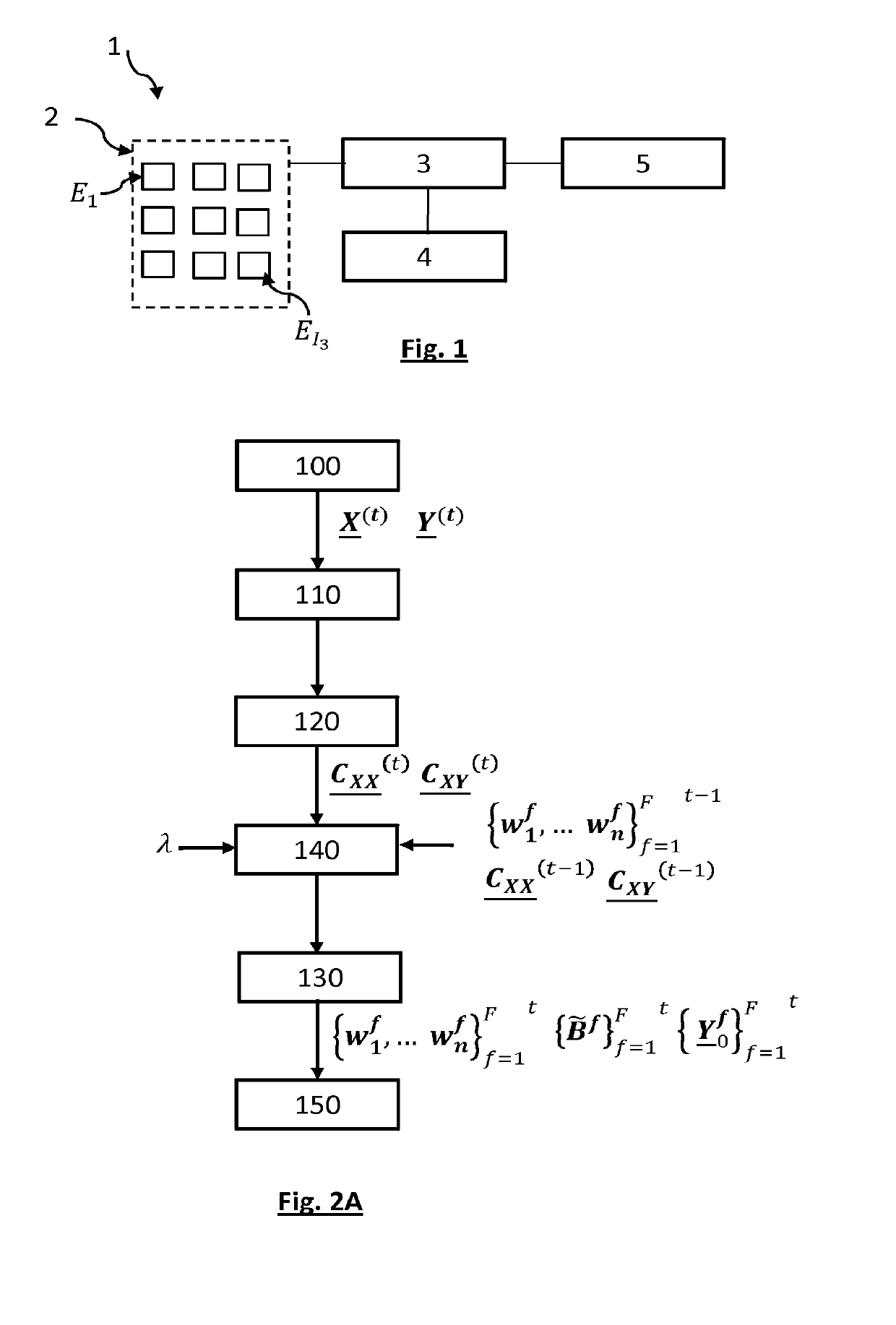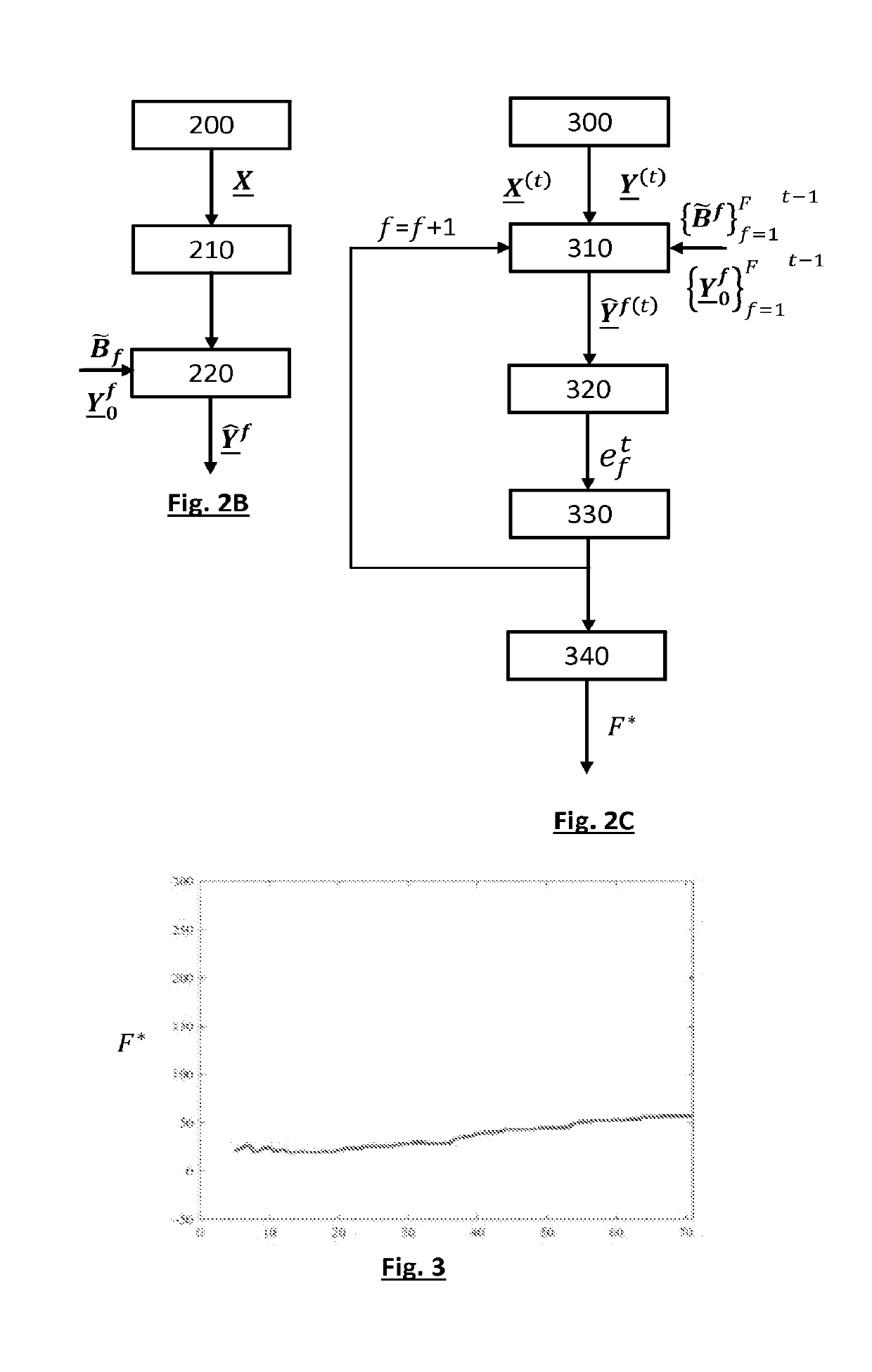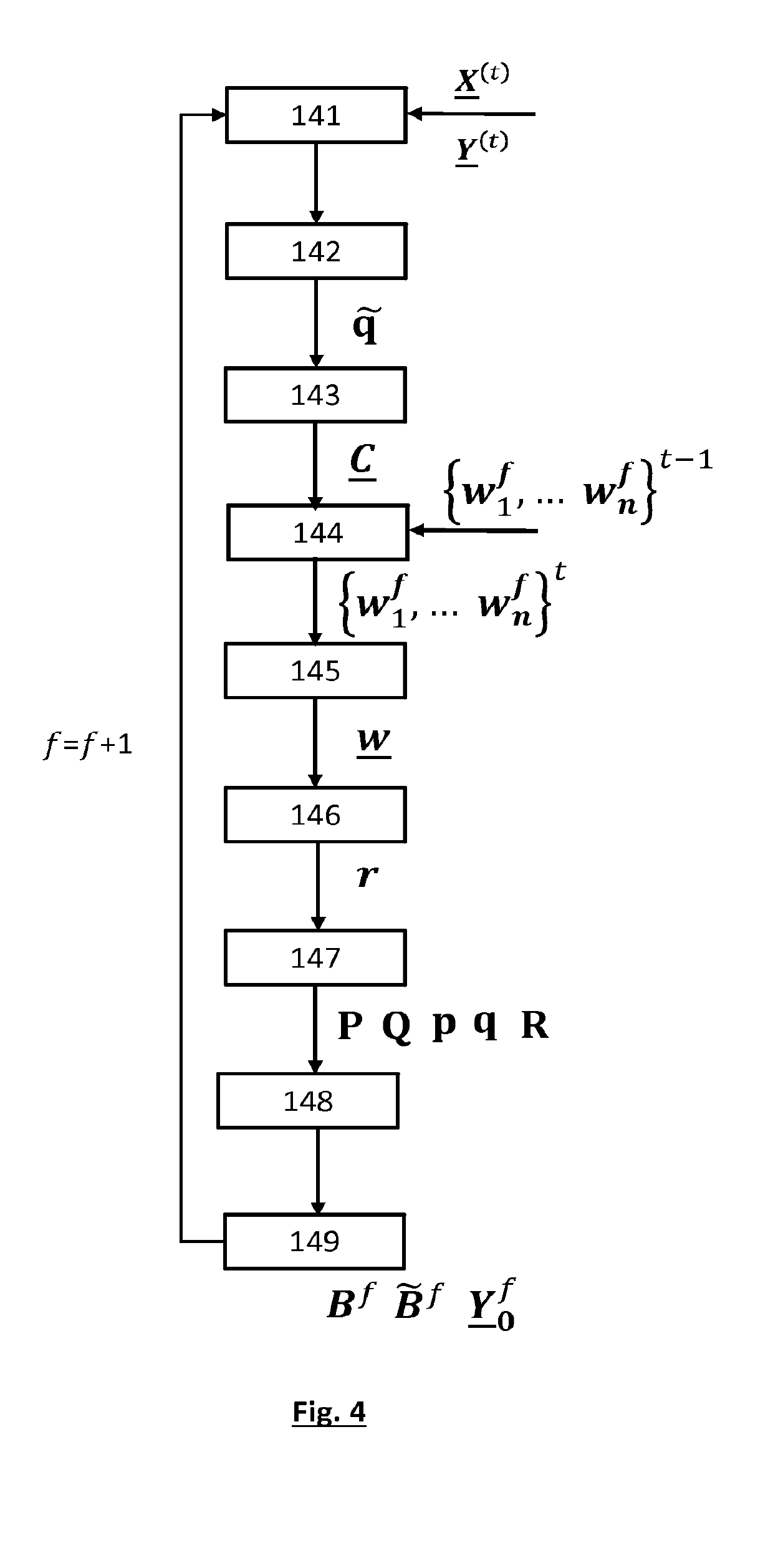Iterative process for calibrating a direct neural interface
- Summary
- Abstract
- Description
- Claims
- Application Information
AI Technical Summary
Benefits of technology
Problems solved by technology
Method used
Image
Examples
Embodiment Construction
[0052]FIG. 1 represents the main elements of a neural interface 1 according to the invention. It entails a device comprising sensors 2, allowing the acquisition of electrophysiological signals representative of a neural activity. The sensors 2 are for example cortical electrodes. The sensors 2 are linked to a processor 3, by a wired or wireless link. The processor 3 is able to execute instructions coded in a memory 4. These instructions comprise in particular the algorithms described hereinafter. By implementing these instructions, the processor generates a control signal intended to drive an effector 5.
[0053]The effector 5 is an actuator able to perform an action under the effect of the control signal which is addressed to it. It may entail an exoskeleton, a robot, or a computer. The effector is then controlled by the electrophysiological signals acquired by the cortical electrodes 2, via an algorithm coded in the memory 4 and implemented by the processor 3. The device 1 is a direc...
PUM
 Login to View More
Login to View More Abstract
Description
Claims
Application Information
 Login to View More
Login to View More - R&D Engineer
- R&D Manager
- IP Professional
- Industry Leading Data Capabilities
- Powerful AI technology
- Patent DNA Extraction
Browse by: Latest US Patents, China's latest patents, Technical Efficacy Thesaurus, Application Domain, Technology Topic, Popular Technical Reports.
© 2024 PatSnap. All rights reserved.Legal|Privacy policy|Modern Slavery Act Transparency Statement|Sitemap|About US| Contact US: help@patsnap.com










